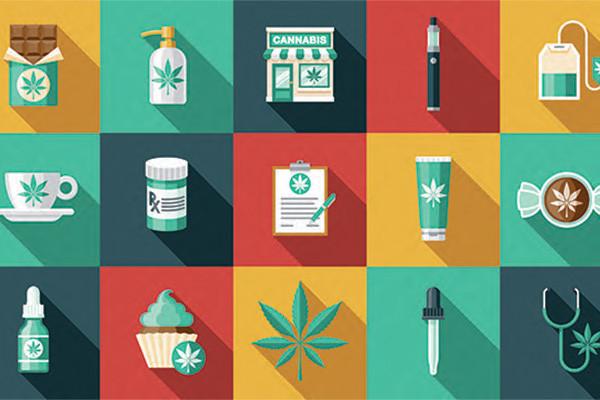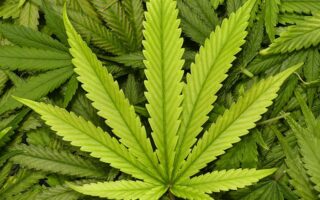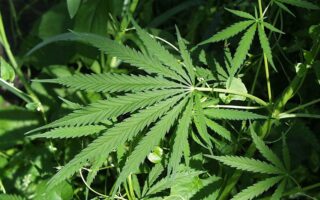Is Weed Safe? A Journey Through Nature’s Enigma
As the sun dips below the horizon, casting a warm glow over fields where cannabis plants sway gently in the breeze, a question lingers in the air: is weed safe? This seemingly simple inquiry opens a Pandora’s box of debate, spanning social, medical, and legal realms. With its increasing acceptance and legalization across various parts of the world, cannabis has evolved from a controversial substance to a focal point of scientific research and personal exploration. Yet, amidst the growing curiosity and consumption, the safety of weed remains a complex tapestry woven with threads of anecdotal experience, clinical studies, and cultural narratives. In this article, we embark on an objective exploration of the multifaceted nature of cannabis, dissecting its potential benefits and risks, and seeking to illuminate the path through this verdant enigma. Join us as we unravel the layers of this age-old plant and examine what safety truly means in the context of weed.
Table of Contents
- Understanding the Science Behind Cannabis Safety
- Exploring the Benefits and Risks of Cannabis Use
- Navigating Legal and Social Implications of Marijuana
- Guidelines for Responsible Cannabis Consumption
- Q&A
- Final Thoughts
Understanding the Science Behind Cannabis Safety
To grasp the complexities of cannabis safety, it’s essential to consider the nuances of its chemical profile. Cannabis contains over 100 cannabinoids, with THC (tetrahydrocannabinol) and CBD (cannabidiol) being the most widely studied. THC is primarily responsible for the psychoactive effects, while CBD offers therapeutic benefits without the “high.” Understanding the balance between these components can help consumers make informed choices. Factors such as individual metabolism, body chemistry, and dosage can impact the overall experience, emphasizing the need for responsible consumption.
Research has shown that, while cannabis can pose risks, particularly when misused, many reported adverse effects are linked to high-THC products. Creating awareness about safe practices is crucial. Consider the following tips to enhance safety and enjoyment:
- Start with low doses, especially if you are a beginner.
- Be mindful of your environment; choose a safe and comfortable setting.
- Consult with a healthcare professional if you have underlying health conditions.
- Stay informed about local laws and regulations regarding cannabis use.
Furthermore, cannabis quality varies significantly across sources. To illustrate, here’s a simple comparison of common consumption methods:
| Consumption Method | Safety Considerations | Onset Time |
|---|---|---|
| Smoking | May irritate respiratory system | Immediate |
| Vaping | Potential for fewer harmful byproducts | Rapid |
| Edibles | Delayed onset; easy to overconsume | 30 mins to 2 hours |
| Tinctures | Precise dosing; fast absorption | 15 to 45 mins |
Exploring the Benefits and Risks of Cannabis Use
Cannabis use has been a topic of fervent debate, with advocates highlighting its medicinal properties while critics voice concerns over its potential downsides. Some of the notable benefits include:
- Pain relief: Many users report significant reductions in chronic pain and discomfort.
- Anxiety management: Cannabis may help alleviate symptoms of anxiety and depression for some individuals.
- Appetite stimulation: It is often used to combat nausea and stimulate appetite, particularly in patients undergoing treatments like chemotherapy.
On the flip side, the potential risks of cannabis use cannot be ignored. These risks include:
- Cognitive impairment: Some studies suggest that cannabis can negatively affect memory and attention span.
- Dependency: Regular use may lead to the development of cannabis use disorder in certain users.
- Respiratory issues: Smoking cannabis can harm lung health, similar to the effects of tobacco smoke.
| Aspect | Pros | Cons |
|---|---|---|
| Relief of symptoms | Effective for pain and nausea | Can lead to dependency |
| Mental health | May reduce anxiety | Potential cognitive impairment |
| Usage method | Available in various forms | Smoking can harm lungs |
Navigating Legal and Social Implications of Marijuana
The legal landscape surrounding marijuana is constantly evolving, leading to a patchwork of regulations across different regions. In places where marijuana has been legalized, it is essential for users to stay informed about state laws and local ordinances. For instance, possession limits, age restrictions, and permissible uses can vary significantly, potentially leading to legal repercussions for the unaware. Cannabis consumers should also consider the implications of federal laws, which may impose restrictions even in states where marijuana is legalized.
Beyond the legal ramifications, there are significant social implications tied to marijuana use. Issues of stigma and public perception continue to influence how individuals approach consumption, and the societal narratives surrounding marijuana use can reflect broader cultural attitudes towards drugs and addiction. Community engagement and education are crucial in reshaping perspectives and fostering informed discussions. The following table summarizes some key factors to consider:
| Factor | Implication |
|---|---|
| Legal Status | Varies by state; impacts accessibility |
| Health Impact | Potential for both therapeutic benefits and risks |
| Social Perception | Influences use and acceptance in social settings |
Guidelines for Responsible Cannabis Consumption
Engaging in cannabis use comes with its own set of guidelines that promote safety and mindfulness. First and foremost, it’s essential to understand your own limits and choose products that suit your experience level. Start low and go slow should be the mantra for both novice and seasoned users alike. This means beginning with a small dose and gradually increasing it while paying attention to how your body reacts. Additionally, ensure your environment is conducive to a positive experience—opt for a comfortable space, surround yourself with trusted friends, and avoid any stressful settings that might trigger anxiety or discomfort.
Moreover, consider the source and quality of the cannabis you consume. Purchasing from licensed dispensaries guarantees a level of safety and transparency regarding THC and CBD concentrations. It’s important to be informed about the product’s effects and potential interactions with any medications you may be taking. Remember to stay hydrated and have snacks on hand, as cannabis can sometimes induce dry mouth and munchies. Keeping a journal can also help track your experiences and pinpoint what works best for you, enhancing future consumption practices.
Q&A
Q&A: Is Weed Safe? Exploring the Green Frontier
Q1: What does “safe” mean when talking about weed?
A: When we talk about the safety of weed (or cannabis), we delve into various dimensions: physical health, mental well-being, the potential for dependency, and even social implications. The term “safe” can mean different things based on individual circumstances, usage patterns, and the specific products consumed.
Q2: Can using weed lead to physical health problems?
A: Like any substance, there can be risks involved. Some studies suggest that smoking weed can harm lung health, particularly if consumed in joint form without filters. However, alternatives like vaporizers and edibles can mitigate some of those risks. It’s crucial to acknowledge that cannabis can have both positive and negative effects on the body, depending on the frequency, quantity, and method of consumption.
Q3: What about mental health? Can weed be harmful?
A: The relationship between cannabis and mental health is complex. On one hand, some people use marijuana to alleviate symptoms of anxiety or depression, while on the other hand, heavy and prolonged use has been linked to an increased risk of mood disorders, especially in individuals predisposed to mental health issues. Moderation and awareness of one’s mental state are essential when considering its use.
Q4: Is there a risk of addiction?
A: Yes, but let’s unravel that a bit. While cannabis is often thought of as non-addictive, research shows that about 9% of users may develop a dependency. This percentage can rise to 17% among those who start using it during adolescence. Awareness and responsible use are key; understanding one’s habits and recognizing signs of dependency can help one navigate this risk.
Q5: Does the legal status of weed influence its safety?
A: Absolutely! The legal status of cannabis varies widely across the globe, affecting access, quality control, and responsible use. In places where it is legal and regulated, consumers are often provided with tested products, leading to a safer experience. Conversely, in illegal markets, there may be a higher risk of contaminants and unregulated dosages, which can compromise safety.
Q6: Can weed be safe for therapeutic use?
A: For many, medical cannabis has provided significant relief from chronic pain, seizures, cancer-related symptoms, and more. When guided by a healthcare provider and used as directed, weed can be safe and beneficial as part of a treatment plan. Always consult a medical professional to tailor its use to individual health needs.
Q7: Are there any safe consumption methods?
A: Yes, there are alternatives to traditional smoking that can minimize health risks. Vaporizers and tinctures can deliver the benefits of cannabis without some of the harmful substances produced by burning plant material. Edibles are another option, though caution is required as their effects take longer to manifest and can lead to overconsumption if not approached mindfully.
Q8: Why is it important to consider personal context when discussing weed safety?
A: Personal context matters immensely; factors like age, health conditions, mental health history, and even genetics can influence how cannabis affects an individual. What may be safe and beneficial for one person can be harmful to another. Personalized perspectives are essential for fostering informed decisions about cannabis use.
Q9: What’s the bottom line on cannabis safety?
A: The safety of weed is nuanced and varies from person to person. It can be safe and beneficial in many contexts, particularly when used responsibly, but it is not without risks. As with any substance, informed choices based on personal circumstances and reliable information are the wisest approach.
Q10: How can someone stay educated about cannabis?
A: Staying informed is vital! Engage with reputable sources, keep abreast of the latest research and legal developments, and consult healthcare professionals about any questions regarding personal use. Education empowers individuals to make choices that align with their health goals and lifestyle.
Final Thoughts
the question of whether weed is safe is not a simple one; it weaves together strands of science, personal experience, societal impact, and evolving legal landscapes. As we have explored, the effects of cannabis can vary widely among individuals, influenced by factors such as dosage, method of consumption, and individual health conditions. While some may experience therapeutic benefits, others could face potential risks, particularly with heavy use or in vulnerable populations.
As research continues to unfold, it becomes increasingly vital for individuals to stay informed and make choices tailored to their unique circumstances. Whether you view cannabis through a lens of wellness, recreation, or caution, understanding the nuances can empower you to navigate this complex terrain. As we move forward in a world where conversations around cannabis will only grow in prominence, let us strive for informed dialogue that embraces the diversity of perspectives and experiences. The journey into the realm of weed is not just about safety—it’s about understanding ourselves and the choices we make in a world of possibilities.



